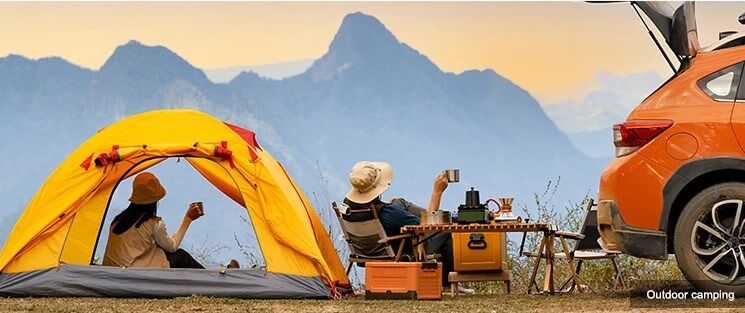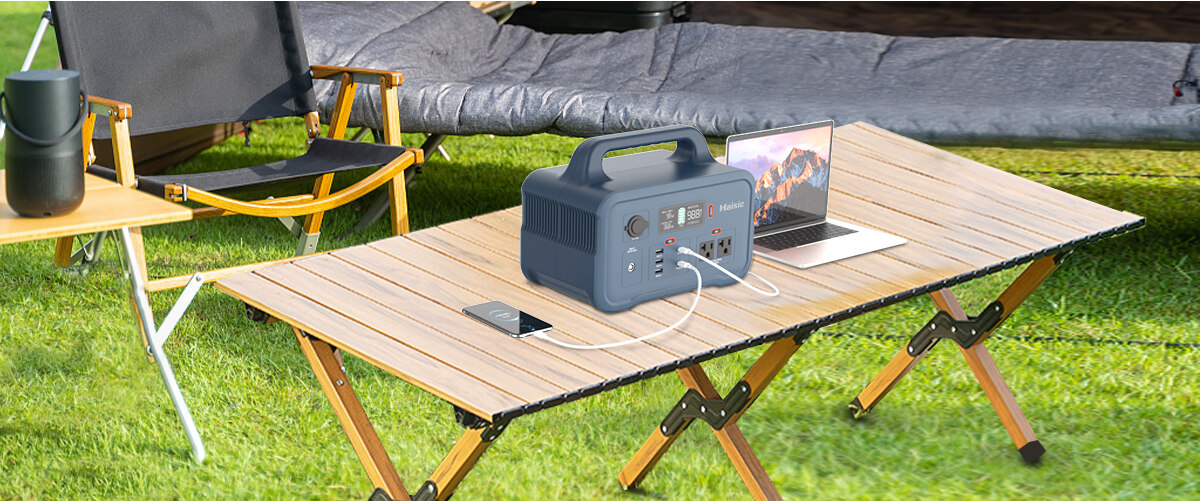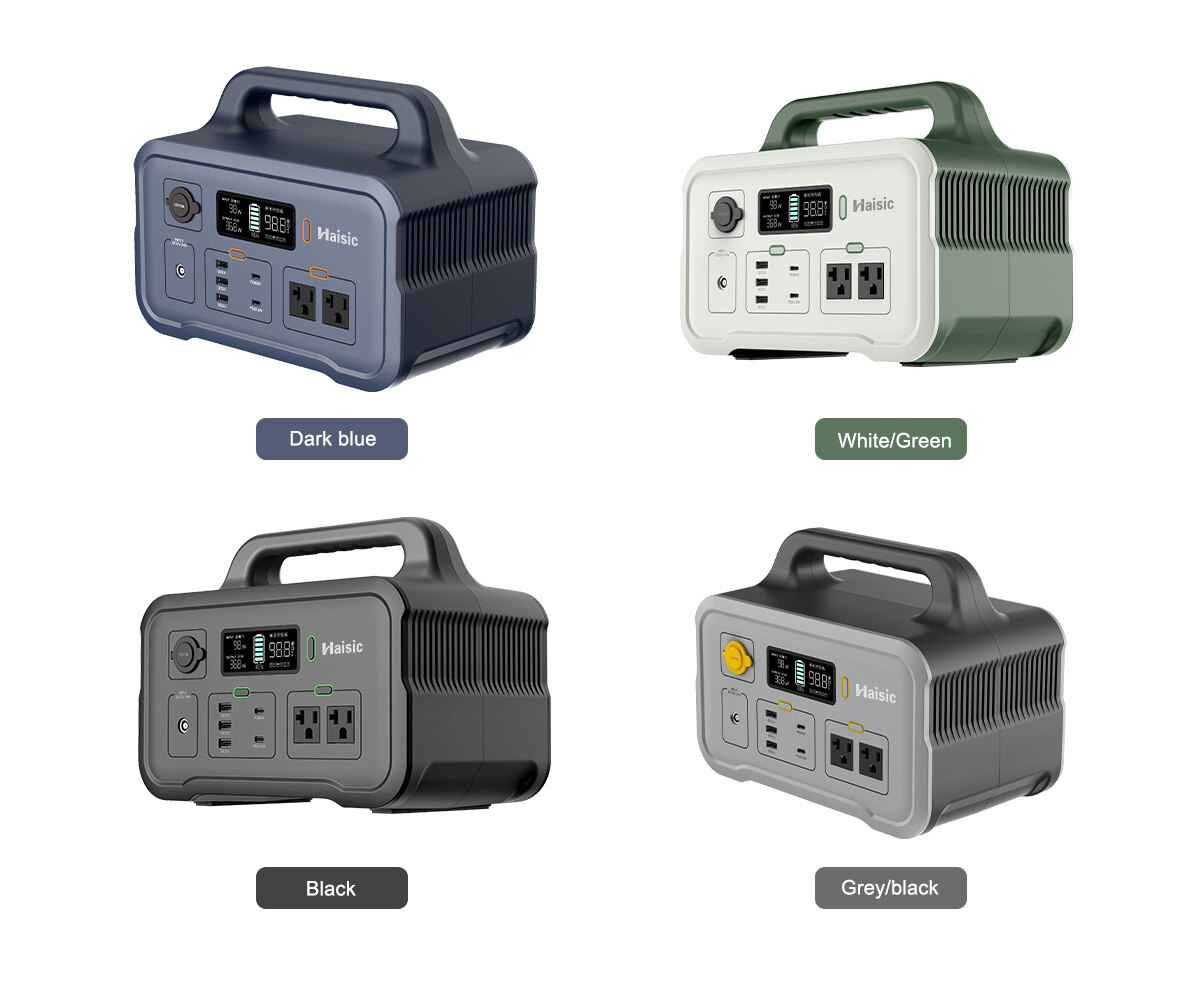Email format error
Email cannot be empty
Email already exists
6-20 characters(letters plus numbers only)
The password is inconsistent
Email format error
Email cannot be empty
Email does not exist
6-20 characters(letters plus numbers only)
The password is inconsistent


When it comes to car camping, there’s nothing quite like the freedom of being off-grid—until you realize your devices are running low on power. Whether you’re looking to keep your phone charged for emergency purposes, run a portable fridge to store your food, or simply enjoy some lights at night, a solar power station can make all the difference. After many car camping trips, I’ve learned that having reliable, clean energy at your fingertips not only enhances comfort but also makes your adventure feel more sustainable and hassle-free.
In this guide, I’ll take you through the best solar power stations for car camping, along with practical tips on how to choose the right one for your needs.
As professionals in our 30s to 50s, we know the value of both convenience and sustainability—especially when we’re on the road. Solar power stations offer an off-grid solution for all your electrical needs without the noise, pollution, and maintenance hassles of traditional gas-powered generators.
I’ve used several solar power stations over the years, and I can tell you this: once you experience the quiet hum of a solar generator working to power your devices, it’s hard to go back. Plus, it’s a win for the environment. No more carbon emissions, just clean, renewable energy to power your camping experience.
Before we dive into the best options available, let’s break down what exactly a solar power station is and why it’s a must-have for car camping.
A solar power station typically includes three main components:
Think of it as a portable energy hub for your campsite. The beauty of it is you can keep all your devices running, even in remote locations, without needing to plug into the grid or rely on a noisy generator.

Choosing the right solar power station can be overwhelming given the variety of models out there, but here are the features you should focus on based on your needs.
I learned early on that if you're car camping, you want something that won’t be a hassle to lug around. Opt for a compact and lightweight unit, especially if you’re planning on carrying it to different spots at the campsite or in the back of your car. Some of the top models can be heavy, but they are built for long-term use. A lightweight option will make life easier when setting up or packing away camp.
This is where things get a little technical, but it’s important to understand how much power you’ll need. The capacity of the battery (measured in watt-hours, Wh) determines how much energy it can store. If you’re powering high-demand devices like a mini-fridge or multiple gadgets at once, you’ll need a higher-capacity unit.
A good rule of thumb: The more capacity, the longer it will last, but it’s also heavier. Think about how long you’ll be camping and how many devices you plan to power.
Camping trips are rarely predictable, and weather can change in an instant. Choose a weather-resistant solar station—especially if you’re camping in harsher conditions. Models that are built to withstand rain or extreme temperatures are a lifesaver when you’re stuck out in the wild.
The last thing you want while camping is a complicated setup. Look for models that are easy to use, with user-friendly interfaces and simple setup. After all, the beauty of camping is the simplicity of being in nature, and your power solution should reflect that.
Here are the best solar power stations for car camping based on my personal experience and some extensive research.
This powerhouse has been my go-to on longer camping trips. With 1000Wh capacity, it can handle everything from your phone to a small fridge. It’s also got multiple charging ports—USB, AC outlets, and 12V—giving you the flexibility to charge multiple devices simultaneously.
I’ve used this to keep my camera equipment running during a 4-day off-grid camping trip in the Rockies. It held up beautifully, even in cloudy weather, thanks to its ability to charge via a solar panel.
If you’re looking for something more portable, the Jackery Explorer 500 is an excellent choice. It’s lighter than many other models but still offers a 518Wh capacity, enough to charge phones, laptops, and even small appliances like a portable speaker or mini-fridge.
I’ve used the Jackery on weekend camping trips, and it’s compact enough that it didn’t take up valuable space in my car. It’s perfect for those who want simplicity and reliability without the bulk.
If you need quick charging, the EcoFlow Delta 1300 is the way to go. This unit charges fully in under two hours from a wall outlet, which is much faster than most solar stations. It has 1260Wh capacity and can handle larger devices like power tools or larger coolers.
I took this one on a camping trip with friends last summer, and it powered a mini-fridge, phones, and a couple of laptops with no problem. It’s a great option for car camping with a group or for anyone who needs reliable power fast.
For long-term car camping or if you have heavy-duty energy needs, the Bluetti AC200P is worth considering. With a 2000Wh capacity, it can handle almost anything. It has 17 outputs, including AC outlets and USB ports, and even includes a built-in MPPT solar controller to ensure efficient solar charging.
When I was car camping with family for a week, this station powered everything from lights to laptops, and we still had juice left over by the end of the trip.
I recently tested the Haisic Portable Solar Power Station, and I have to say, it’s an underrated gem for car campers. With a 288Wh capacity and solar panel compatibility, it’s more compact but still packs a punch. It has AC, DC, and USB ports, making it suitable for charging phones, tablets, or small appliances.
What impressed me most was its affordability—a great option if you’re on a budget but still want something that works reliably for weekend trips.

Setting up your solar power station doesn’t have to be a hassle. Here are a few tips based on my own experiences.
Find a sunny spot to place your solar panels, ideally facing south (if you’re in the Northern Hemisphere). I learned the hard way during one camping trip that an overcast sky can drastically reduce charging speed. Aim for direct sunlight whenever possible!
It’s easy to overestimate how much power you need, especially when you have a bunch of gadgets to charge. Keep track of how much power you’re using. For example, you might want to prioritize powering your fridge over charging your phone. Also, consider using energy-saving devices whenever possible.
Some models let you charge multiple devices simultaneously, but it’s important to avoid overloading the system. It’s better to prioritize the essentials and charge others when you have extra capacity.
In conclusion, the best solar power stations for car camping can completely transform your camping experience, giving you the freedom to power all your gadgets and gear without relying on traditional power sources. Whether you’re heading out for a weekend escape or a long-term off-grid adventure, a good solar power station ensures you’ll never have to worry about running out of juice. I’ve been on both ends—struggling with low batteries and enjoying the reliability of solar—and trust me, the latter is much more enjoyable.